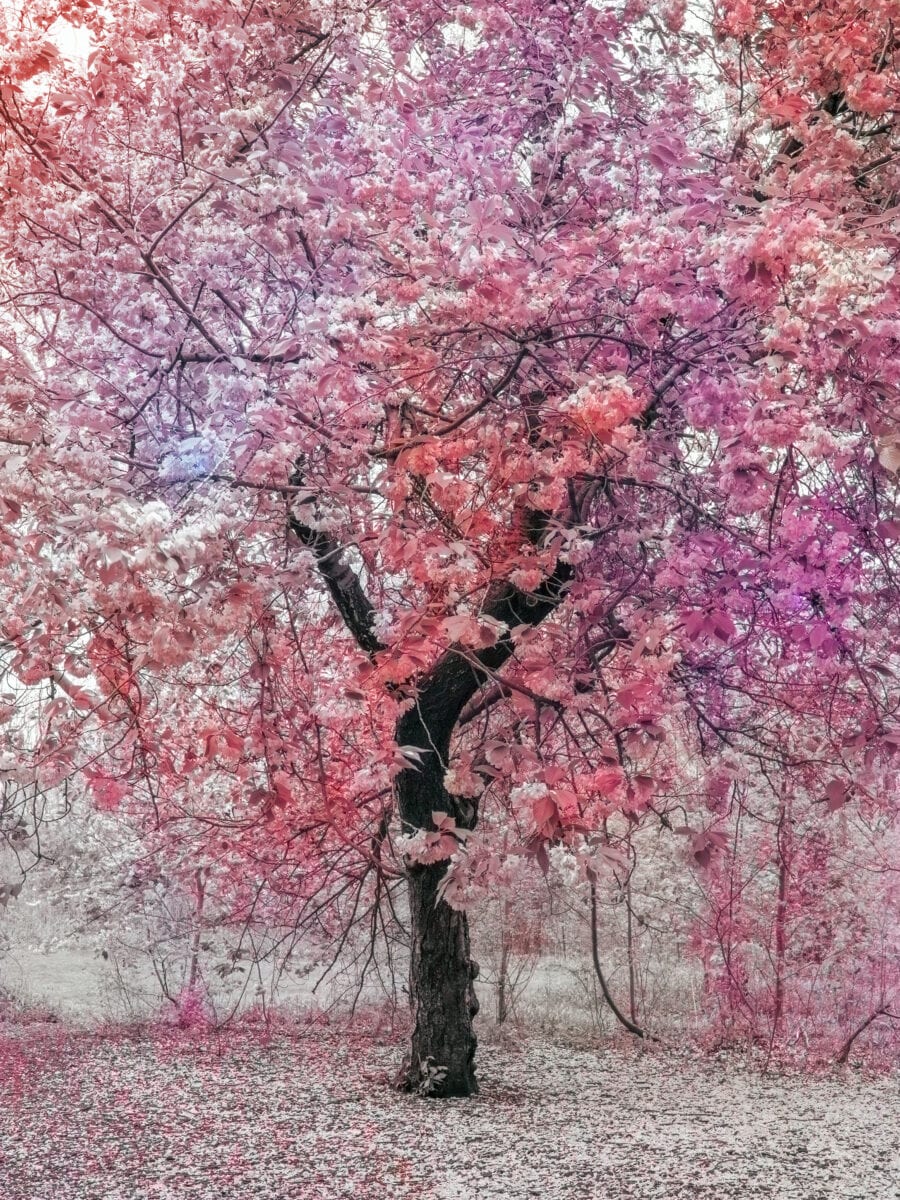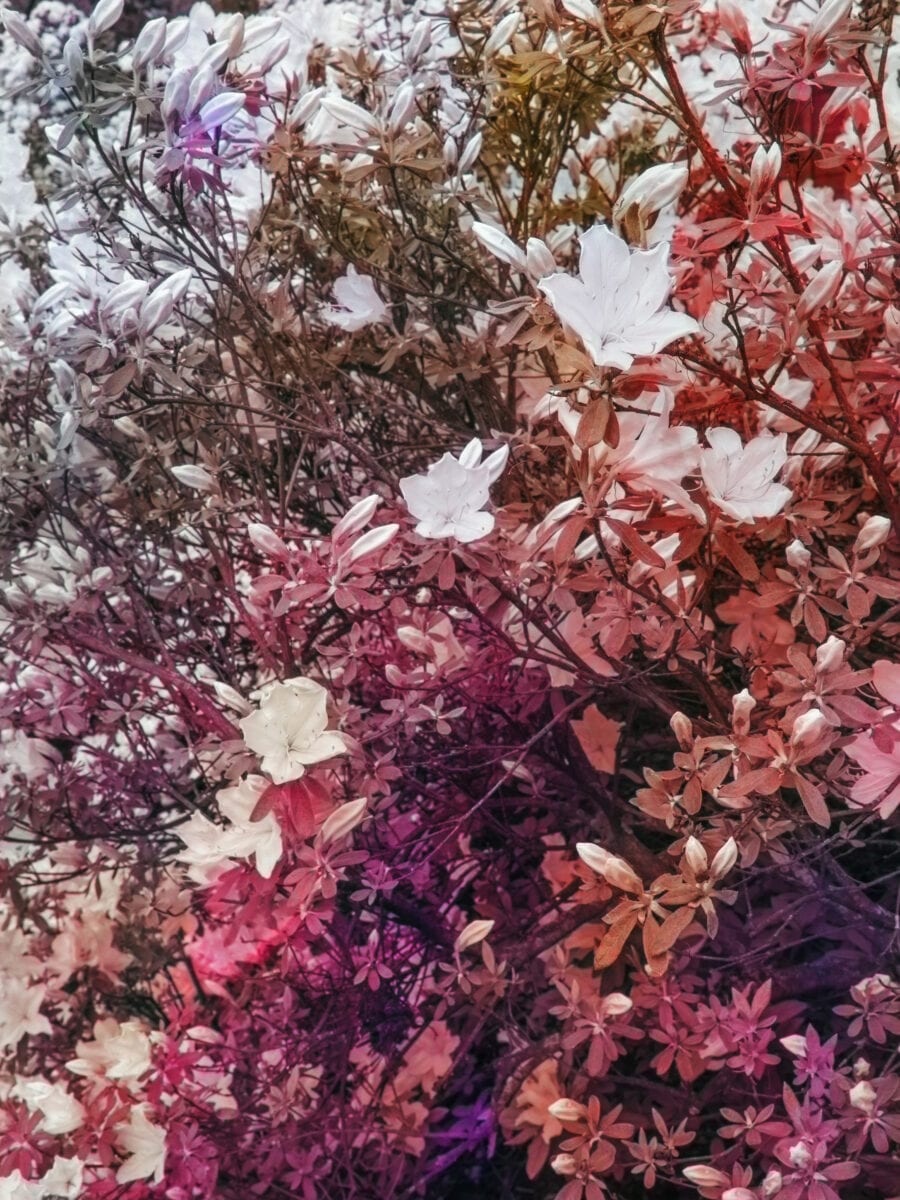Trevor Paglen (b. 1974) is an American artist examining the systems and technologies that shape our world. Through image making, sculpture, investigative journalism, writing and more, he reveals the darker underpinnings of the digital landscape – from mass surveillance to data collection and AI. As a new exhibition, Bloom, opens at London’s Pace Gallery, Paglen discusses the impact of machine learning algorithms on society.
A: The images in Bloom appear to be highlight saturated, richly detailed photographs of flowers. How are they created?
TP: The works were created by photographing the spring bloom of 2020 and bringing those photographs into a software environment we created in the studio. The software attempts to identify different components that make up an image (textures, shapes, objects, etc.) using AI. The colours in the images correspond to the different ways that the AI sees the components of the image.
A: The series plays with the “Vanitas” tradition of the 15th and 16th centuries, which drew attention to transience and mortality through still life painting. How does your work update this for the digital age?
TP: For me, Bloom is an exhibition about mourning and fragility. It’s a body of work made at a moment in history when hundreds of thousands of people are dying due to the lack of leadership and lack of public services, where we’re all confined to our houses and apartments in a collapsing economy, and where the Trump administration is doing its best to deal a death blow to democracy itself. And all the while, our forms of sociality have been reduced to bizarre interactions on online platforms that we know are working against us. Looking at all these forms of fragility led me to think of the vanitas tradition and other allegorical traditions as reference points.

A: ImageNet Roulette is an interactive artwork which categorises members of the public using an AI model. What does this process reveal about the datasets that train these systems – and the foundations of society at large?
TP: ImageNet Roulette was created using one of most widely used datasets for AI called ImageNet. I spent a lot of time with that dataset and started to understand how many horrible forms of racism, misogyny, stereotypes and cruelty were built into the system – and by extension all other systems that are built upon it. We are constantly being categorised by AI systems and are rarely given feedback about what those classifications are, or how awful they can be.
A: The exhibition taps into timely dialogues surrounding criminality and policing through works such as The Standard Head and Personality Model. Can you expand on this?
TP: One of the themes in the exhibition has to do with standardisation – who gets to decide what “normal” is and what “deviancy” is. These forms of categorisation are forms of power with very real consequences in terms of who goes to jail and who doesn’t, who gets credit and who doesn’t, etc. So, I wanted to show some of the ways in which these standards get created and propagated and how incrediblly regressive they usually are.
A: Why is it important to bring these surveillance technologies into the arts space?
TP: When we’re talking about AI, we’re very often talking about the politics of interpreting images – whether that’s facial recognition or other computer vision systems. Artists have been thinking about vision, images and interpretations for thousands of years, and have a massive theoretical and practical tradition of thinking about what “seeing” is. I think artists have the capacity to ask questions about automated vision systems that would never occur to engineers without that training.
A: What do you hope audiences take away from the show?
TP: What I want out of art is things that help us see the world around us differently – Bloom is an exhibition that is my own attempt to “see” this particular moment in history in some small way.
Bloom is at Pace Gallery, London, from 10 September – 10 November. Find out more here.
Lead image: Trevor Paglen, Bloom (#9b746d), 2020 dye sublimation print 102.9 cm × 137.2 cm (40-1/2″ × 54″) © Trevor Paglen, courtesy the artist and Pace Gallery.
1. Trevor Paglen, Bloom (#7f595e), 2020 dye sublimation print 137.2 cm × 102.9 cm (54″ × 40-1/2″) © Trevor Paglen, courtesy the artist and Pace Gallery.
2. Trevor Paglen, Bloom (#a5808a), 2020 dye sublimation print 137.2 cm × 102.9 cm (54″ × 40-1/2″) © Trevor Paglen, courtesy the artist and Pace Gallery.
3. Trevor Paglen, Bloom (#887165), 2020 dye sublimation print 49.5 cm × 66 cm (19-1/2″ × 26″) © Trevor Paglen, courtesy the artist and Pace Gallery.
4. Trevor Paglen, Bloom (#7b5e54), 2020 dye sublimation print 66 cm × 49.5 cm (26″ × 19-1/2″) No. 75670.01 © Trevor Paglen, courtesy the artist and Pace Gallery
5. Trevor Paglen, Bloom (#79655d), 2020 dye sublimation print 66 cm × 49.5 cm (26″ × 19-1/2″) © Trevor Paglen, courtesy the artist and Pace Gallery









